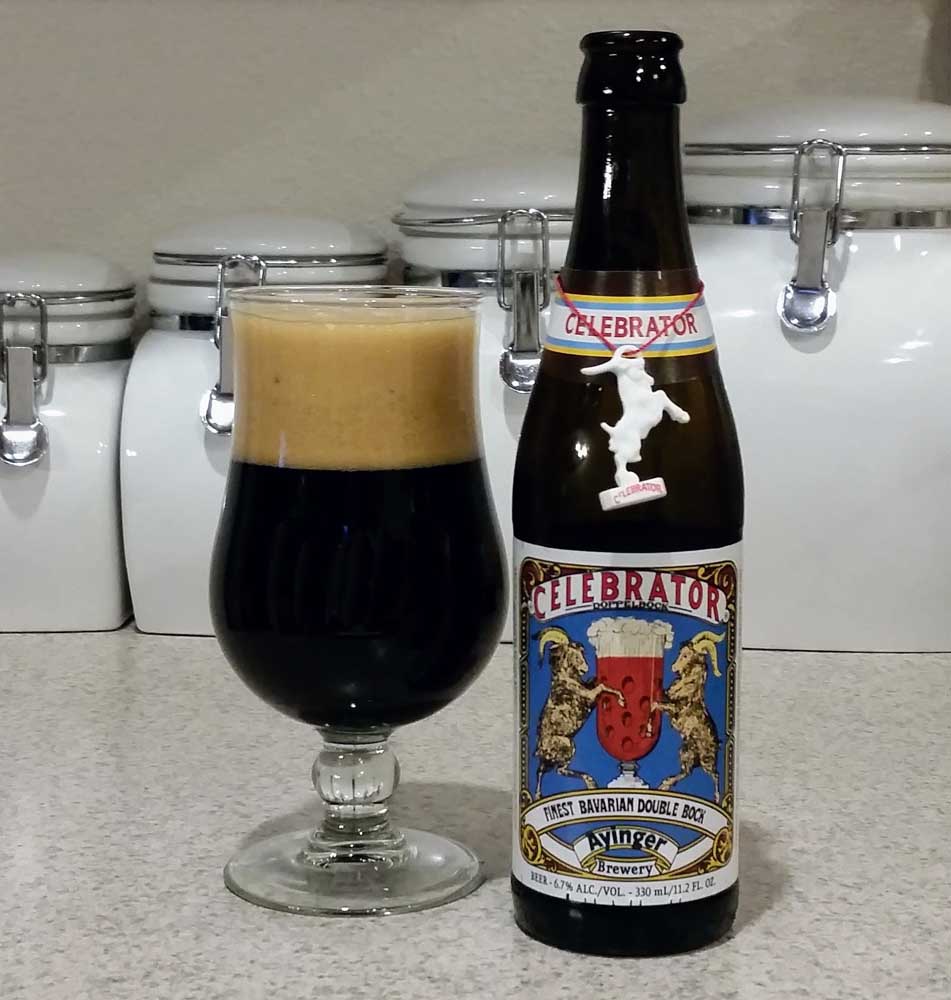10 Barrel pours two doppelbocks this spring
Published 11:30 am Wednesday, March 30, 2022

- Celebrator Doppelbock, from Germany’s Ayinger Brewery is the gold standard of the malty beer style.
A few years ago, I wrote about bocks, the family of German lager styles traditionally released in spring. With spring upon us, I thought it was time to revisit the topic, with a focus on the best-known style in the family — doppelbock.
Though the name means “double bock” in German, doppelbock was not based on the original bock style that developed in the city of Einbeck. It originated with Franciscan monks in Munich in the 17th century. This particular beer was thick, sweet and dark, and brewed to sustain the monks as they fasted during Lent (the six weeks leading up to Easter).
Trending
According to beer writer Jeff Alworth, they began selling it during the eight-day Feast of the Holy Father celebration in Bavaria. “The beer was known as Sankt Vater Bier (‘holy father beer’), later shortened to Salvator,” he writes in “The Beer Bible.” The public noticed the similarity to other malty bock beers and began referring to Salvator as a “double” bock due to strength.
In 1799, the monks sold their brewery to the state, which subsequently sold to a brewer who later changed the name to Paulaner. By the late 1800s, the style was popular enough that “salvator” had become a generic name for the style and dozens of breweries in the region were making their own versions of salvatorbier.
Paulaner ended this practice by trademarking the name Salvator. “To retaliate,” writes Alworth, “brewers appropriated the ‘-ator’ ending, so now there are countless variations on that theme: Celebrator, Animator, Optimator, Maximator, and so on.” Craft breweries often give their doppelbocks a name ending in “-ator” as a nod to this tradition.
Stylistically, doppelbock comes in two variants broadly defined by color, dark and pale. Both versions emphasize malts, and should be relatively strong, rich, and quite malty. The darker class is the more common, full of deeply toasted flavors and aromas, with possibilities of chocolate and dark fruits with some caramelization.
Paler examples should also be rich and toasty, and bready with less of the darker malt fruitiness. These may emphasize hops more, though the malt should still be the defining characteristic, and finish drier.
I consider Celebrator Doppelbock, from Germany’s Ayinger Brewery, to be the gold standard of the style. This dark lager is full of rich notes of chocolate, molasses and dark plums, with a luscious mouthfeel and velvety finish and a light flourish of coffee. It’s 6.7% alcohol by volume and 24 IBUs, which is a bit lighter in strength than most.
Trending
For whatever reason, doppelbock is not widely represented among Central Oregon breweries. Deschutes Brewery, Boneyard Beer Company and McMenamins Old St. Francis School, among others, occasionally release versions, but they are few and far between.
Redmond’s Kobold Brewing Company recently offered Doppel the Empire, brewed in the classic dark style, with 8.3% ABV and 18 IBUs. Unfortunately, the beer tapped out just prior to writing this article.
On the other hand, 10 Barrel Brewing Company currently has not one, but two doppelbocks on tap, one dark and one pale. This provides a singular opportunity to try both types simultaneously to compare and contrast.
At the brewery’s west side pub, Captivator is a traditional dark version of the style, with 7.6% ABV and 21 IBUs. The east side pub is pouring Do Not Deface The Doppelbock, a pale version that was brewed to be aged in oak barrels; Do Not Deface is the un-aged beer, with 7.3% ABV and 30 IBUs.
I picked up a crowler of each to taste in a side by side evaluation.
The difference in appearance is striking. Do Not Deface is a rich copper color, while Captivator is a deep amber, nearly brown, with red hues when held up to the light. Both have great clarity for a bright presentation.
Do Not Deface offers up aromas of golden syrup and rich, toasty biscuit, with a floral alcohol note and some spicy hops. The hop bitterness extends into the flavor, offsetting a sweet roll sweetness and a bready character that features a touch of toffee. A subtle hop spice complements a dry, balanced finish.
The darker Captivator brings lightly roasted scents of treacle, rum raisins, and molasses cookies (without the ginger). There’s a brown-toasted bread quality on the first sip, with a wisp of molasses, dark fruits, and a rich maltiness evoking fruit leather and amber rock candy. Hops have a minimal impact here, and it finishes clean and dry.
Both beers are currently available, and provide a good overview of the doppelbock style to explore with the season.
Top 5 beers of the week
Kölsch — Van Henion Brewing
St. Gertrude’s Irish Red — Kobold Brewing
Mediator Doppelbock — Heater Allen Brewing
All Nelsons Cold IPA — Boss Rambler Beer Club
Dark Mild English-Style Ale — Machine House Brewery








